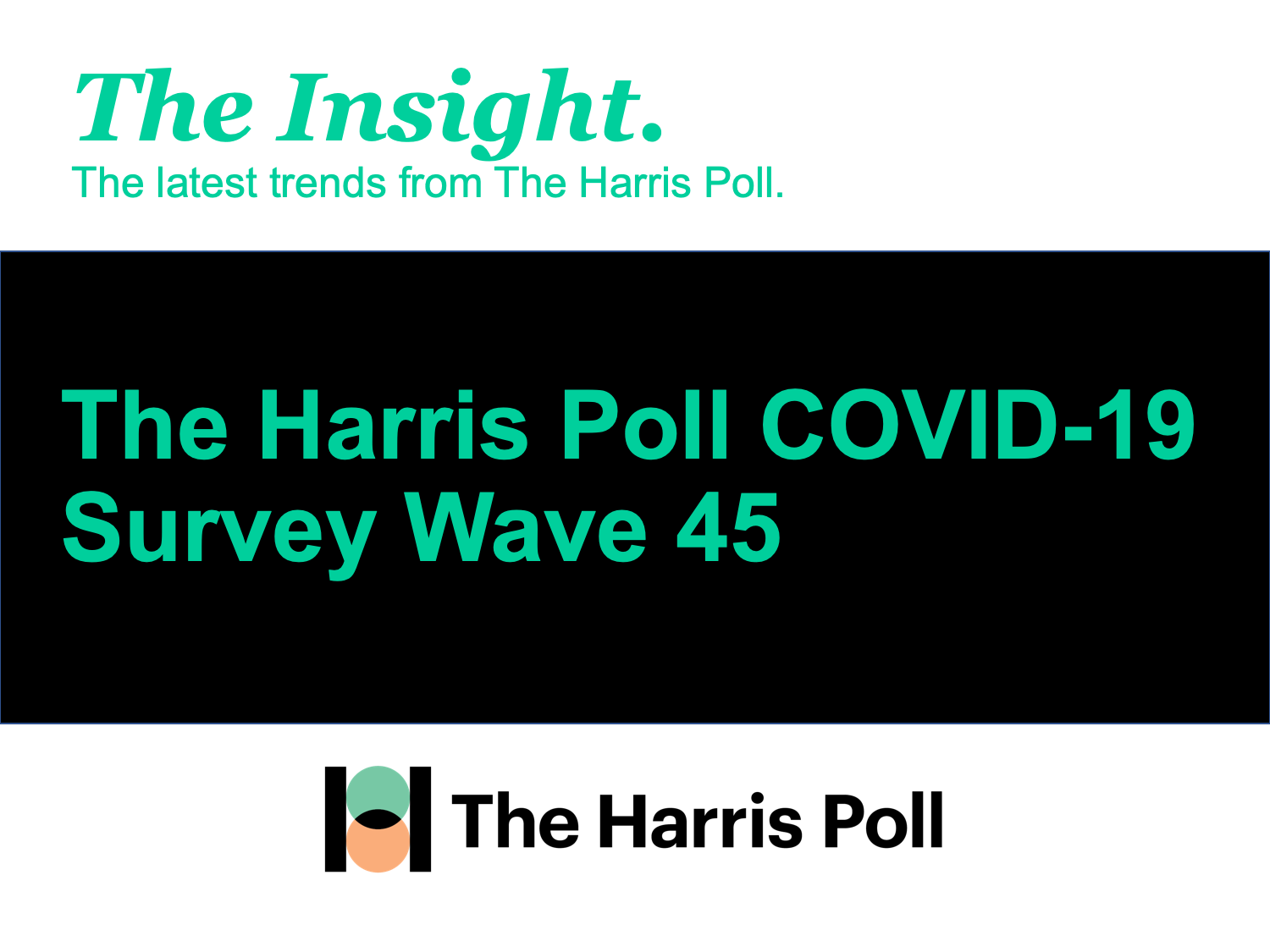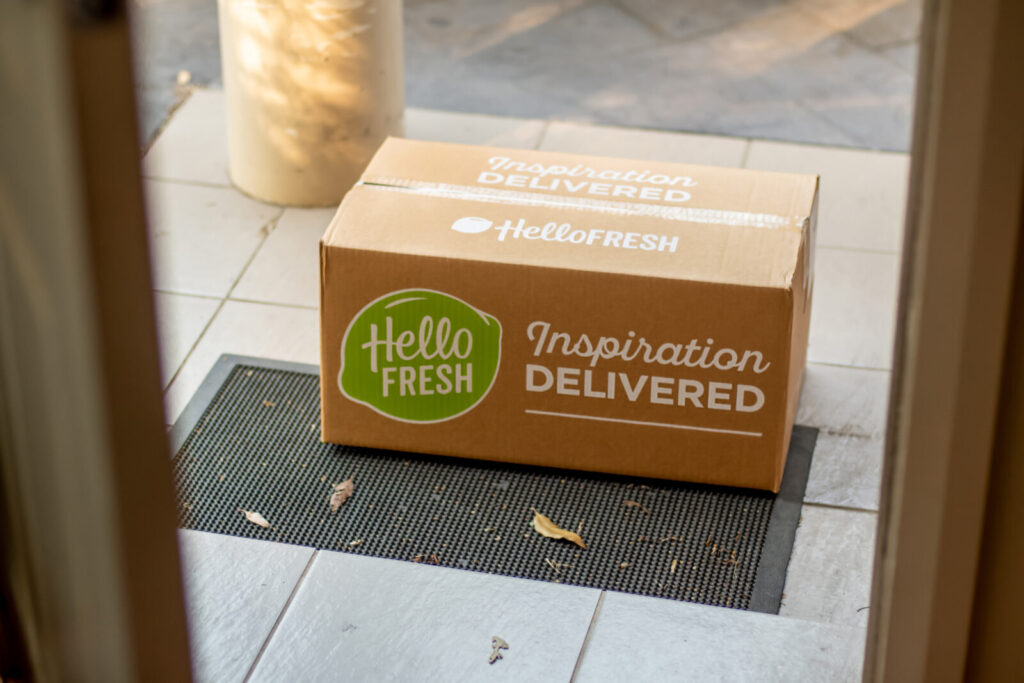Brief • 4 min Read

In The Harris Poll COVID-19 Tracker (Week 45), fielded December 28th to 30, we gauge how Americans feel about Twitter’s decision to ban President Trump, what the incoming Biden Administration means for marketers, a check-in on where consumerism is, the future of telehealth, and the impact of the pandemic on children’s mental health.
As a public service, our team has curated key insights to help leaders navigate COVID-19. Full survey results, tables, and weekly summaries can be accessed for free at The Harris Poll COVID-19 Portal. We will continue to actively field on a regular cadence to track the shifts in sentiment and behaviors as the news and guidelines evolve.
Twitter’s Trump Ban After Deadly Capitol Attack Supported by Most Americans But Not Most Republicans: USA Today-Harris Poll
Most Americans, but not most Republicans, support Twitter’s permanent suspension of President Donald Trump after the deadly U.S. Capitol siege, according to our latest survey shared exclusively with USA TODAY.
- Stimulus: Biden sees the highest support for (78%) providing $175 billion in low-interest loans to small businesses, while (76%) support passing an additional $1,400 stimulus checks. Three-quarters (75%) of Americans support expanding tax credits for low- and middle-income families, including (69%) of Republicans vs (83%) of Democrats.
- Protecting Americans: Just under three-quarters support extending the eviction and foreclosure moratorium (74%) and requiring all employers to offer paid sick leave until after the pandemic (72%).
- Reopening schools: Over two-thirds (68%) support providing $170 billion to help schools reopen in the pandemic, including (77%) of Democrats and (63%) of Republicans.
- Two-thirds (66%) support raising the minimum wage to $15 per hour and (65%) ending the lower minimum wage for tipped workers. Half (50%) of Republicans support raising the minimum wage, the lowest level of Republican support for any of these policies (vs 82% of Democrats).
Takeaway: The Wall Street Journal details what – and how – President Biden hopes to accomplish in his first 100 days. As they put it, Biden will take office “this week with a far-reaching set of plans for his first 100 days, but he must grapple with narrow Democratic majorities in Congress and an unsettled country as he seeks to roll back some of his Republican predecessor’s policies and curb the pandemic.”
Marketing in the Moment: America’s (Fluid) Expectations for Companies
On Tuesday, Harris Poll’s Tawny Saez, Director and Cultural Anthropologist, joined Campaign US Virtual Brunch Briefing to discuss how President-Elect Biden’s policies could impact brands, agencies and media owners based on Harris’ latest polling data. Here are some of the highlights:
- A majority are optimistic about how Biden will address COVID (63%), the economy (59%), and racial inequality (58%). Meanwhile, optimism is divided across the aisle; democrats are more than 2x likely to be optimistic across all issues.
- Americans are calling on Biden to enact stronger government intervention to address COVID compared to the previous administrations’ approach that left states to fight the pandemic largely alone. This includes drastic enforcements such as mask mandates (75%), COVID testing (73%), bans on gatherings (66%) and even mandating people to get the vaccine (56%).
- Americans have most confidence in Biden’s ability to distribute the vaccine rapidly (64%), which is critical as (32%) are skeptical of getting the vaccine, especially BIPOC (45% Black; 38% Hispanic; 31% Asian vs 29% White).
- The majority are hopeful Biden will heal deep cultural divides (59%), but we are living in a divided world where outlook is tied to party affiliation; there is 40-point gap of optimism between democrats (62%) and republicans (16%) and a 27-point gap of hopelessness between Republicans (33%) and Democrats (6%).
- Now is the time for brands to act, and consumers say they will remember: (72%) say ”I will remember the companies that took missteps in their response to the issues related to the COVID-19 pandemic, economic security of their workforce, or racial injustice long after this is over.” But they are giving companies an opportunity; while (82%) say “This is an opportunity for large companies to hit the “reset” button and focus on doing right by their workers, customers, community and the environment.”
Takeaway: Americans are optimistic about the incoming Biden Administration, but a lack of transparency from leadership to-date has seeded mistrust, skepticism and division. To stay relevant, brands will need to adopt new forms of communication that speak to diverse consumer values that engender trust through accountability and action.
We’ve Got a Long Way to Go
This week, we looked at where consumer sentiment is at this stage in the pandemic by asking Americans how comfortable they currently are to do activities that were part of everyday life before the pandemic. What did we find? We still have a long way to go until Americans are comfortable enough to live a normal life.
- At the moment, Americans are not comfortable socializing: (62%) are not at all comfortable attending a large sporting event or concert, while (56%) are not comfortable going to an indoor party, (43%) are not comfortable going out to dinner or drinks indoors; and (38%) are not comfortable visiting friends or family without a mask.
- And a return to normal will rely on comfort in the customer journey, which we are still a long way away from: (56%) are not at all comfortable shopping in a store without a mask, (55%) are not comfortable flying on a plane, (55%) are not comfortable taking public transportation, and (43%) are not comfortable staying in a hotel.
- But there is some optimism: 4 in 10 (43%) are confident we will reach herd immunity and “return to normal” sometime in the summer 2021. Younger Americans (50% of Gen Z/Millennials and 52% of Gen X) are the most optimistic about a return to normal, while (35%) of Boomers and (31%) are not so confident.
- And as COVID now rampages through much of rural America, it is Urbanites (54%) who are most optimistic about a return to normal this summer (vs 36% of Rural Americans and 37% of Suburbanites.
Takeaway: Even as Dr. Fauci assured people last week that the end is in sight and crowded events can return “some time in the fall of 2021”, the overwhelming majority of Americans are still hunkering down as we brace for what is to come (66% say the worst is still ahead of us). To make consumers feel more comfortable, brands will need to stay ahead of consumer expectations, such as Uber who is partnering with Moderna to build ride scheduling into vaccine appointments.
Most Americans Plan to Use Telehealth After the Pandemic: MedCity News-Harris Poll
One of the biggest questions of COVID seems to be, what aspects of American life are changed forever? When it comes to healthcare, it looks like some new virtual habits adopted during the pandemic might be here to stay; (65%) of people plan to continue to use telehealth after the pandemic ends according to our latest survey covered exclusively by MedCity News.
- Expect a hybrid of telehealth and in-person care: If given the option between a telehealth visit or an in-person visit, (42%) would choose a combination of in-person and virtual care. Most people (44%) still preferred in-person visits, and relatively few respondents (15%) said they would opt for telehealth services alone.
- Age matters:Half of people ages 35-49 said they’d prefer a combination of both, while 66% of people ages 65 and up said they’d choose in-person visits.
- Telehealth = convenience: Most people wanted to use it to ask medical questions, including 62% of people over age 65. Other popular uses were for reviewing lab results and getting prescription refills.
- But in person care is still important for sensitive matters: Fewer people said they would use virtual visits for regular checkups, therapy or when their child is sick.
- Despite (76%) of people saying they would miss in-person visits if their primary care physician moved mostly to telehealth, half of respondents under age 50 said they would consider replacing primary care with doctors on demand via telehealth. And even 35% of the general population said they would consider this if they could access most of their regular appointments via telehealth.
Takeaway: The pandemic has served as an accelerant to shifts that were already happening and will continue – it’s critical to be “touchless” ready across all channels – physical and digital. This is part of the larger rise of safety as a customer journey we’re seeing; brands that find the right balance of touchless, yet with a human touch will definitely emerge as winners.
The Pandemic Is Taking a Toll on Children’s Mental Health
This week CEO Will Johnson co-wrote an op-ed for Business Insider based on a survey that found that while children are less likely to get COVID or experience severe symptoms, they have not been shielded from the effects of the pandemic.
- School-aged children are socially isolated, with only (16%) of those 18 and younger having gone back to school this fall. On top of this disruption, (10%) of them have had a COVID-19-related death in the family, (18%) had a parent lose a job, and (45%) had parents suffer a drop in income.
- Since COVID-19 hit, mental illness symptoms have increased in school-aged children. According to their parents, one in seven kids has been quick to anger, has trouble concentrating, and has low energy. This jumps even higher when considering households with incomes below $50,000 per year to (40%) of children displaying these symptoms.
- Children are suffering: Parents consider one in eight of their children’s mental health (13%) as poor or fair today.
- However, fewer parents say they’re seeking mental health treatment for their children or think treatments are effective. 1 in 10 (11%) children now have parents who say therapy is not very or not effective at all, and (10%) have parents who say drug treatment is not very effective or doing no good at all.
Takeaway: As Will stresses, “decision-makers need to recognize the impact of school closures on the well-being of our children and prioritize returning children to the classroom, to reduce the social isolation that surely is exacerbating children’s mental health issues.”
Subscribe for more Insights
Subscribe to our newsletter for the latest trends in business, politics, culture, and more.
Related Content









